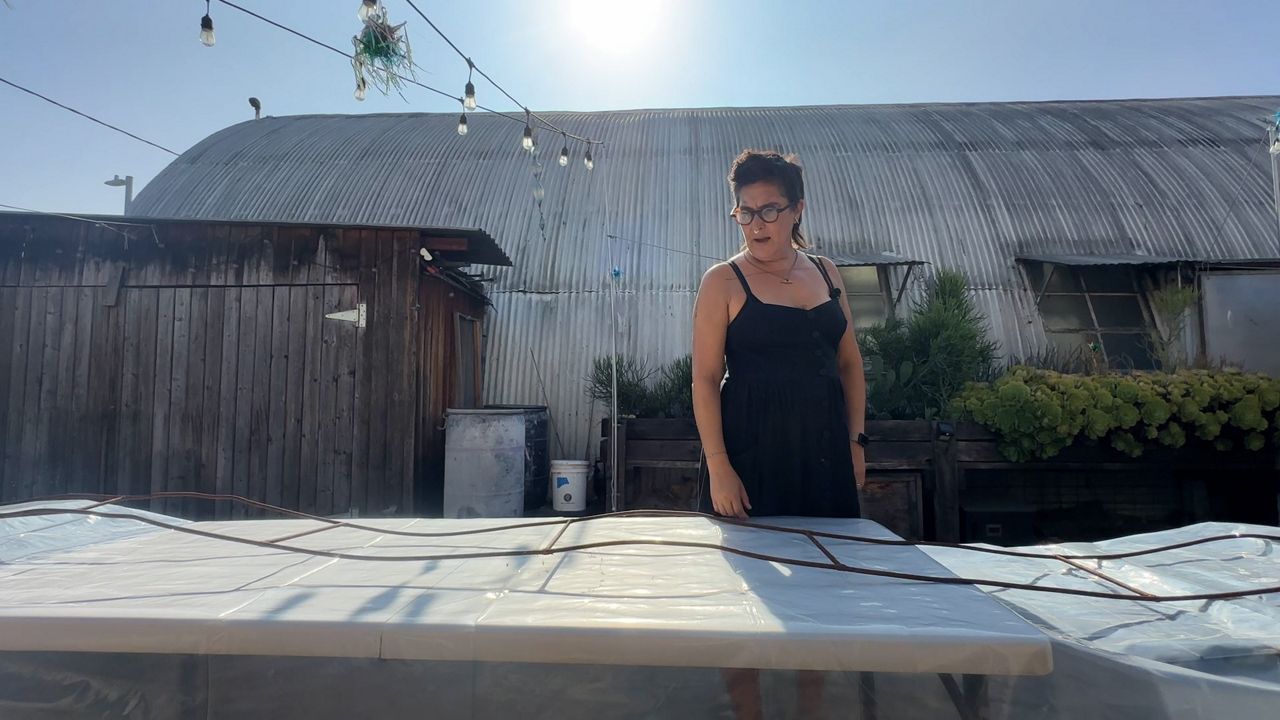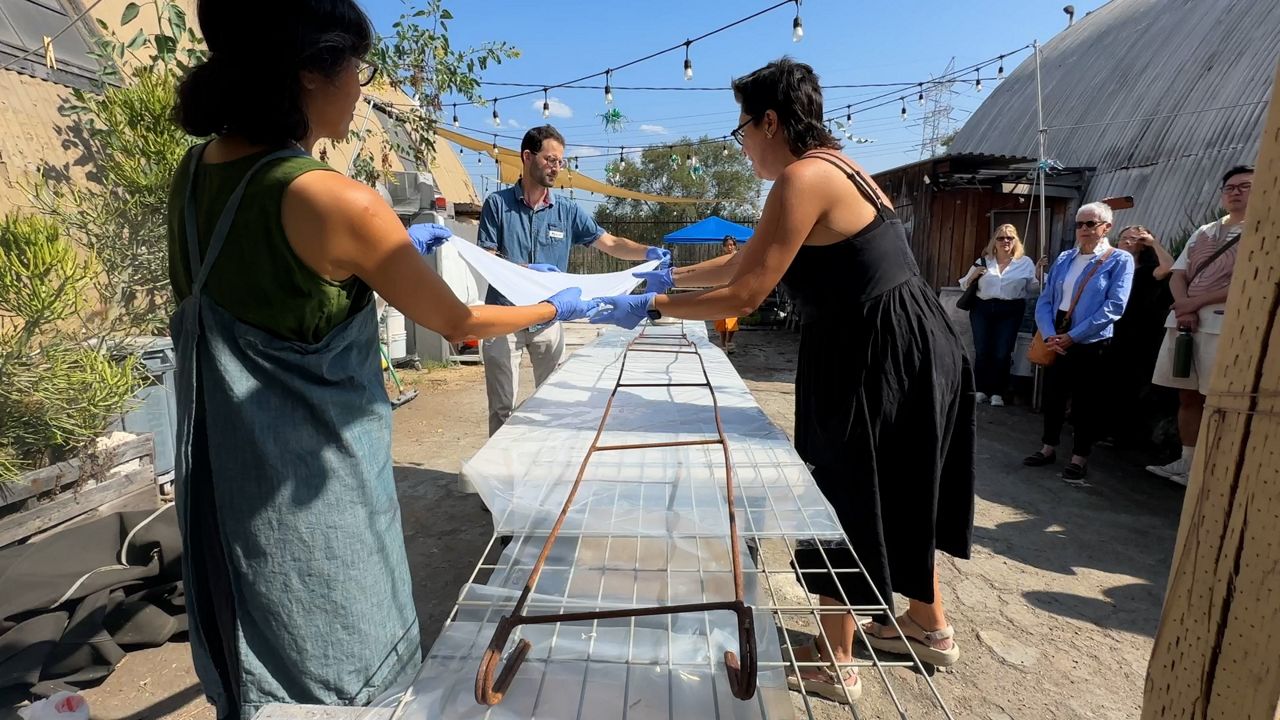LOS ANGELES — It takes several folding tables to hold the length of the makeshift rebar ladder that artist Tanya Aguíñiga found at the southern border.
At 30 feet long, it represents what migrants face to reach the top of the wall, and the straight drop that exists on the other side.
“The length of it was so just shocking to see,” she said. “This is what, you know, like grandparents, aunts and uncles, little kids are having to scale to try to find safety.”
Aguíñiga grew up on the U.S.-Mexico border with one foot in each world. Raised in Tijuana, she crossed into the U.S. every day to attend school in San Diego.
“A lot of the work that I do is trying to get people to understand, migration issues, human rights issues,” she explained. “To understand the realities that people face, living on the border… and make sure that, you know, throughout this whole process, we don’t dehumanize each other.”
The height of the border wall was increased to 30 feet under the first Trump administration and since then, she points out, the number of traumatic injuries suffered by migrants entering the country has increased five times over, according to the Journal of American Medicine, which detailed hundreds of patients in U.S. hospitals who had suffered “significant brain and facial injuries,” as well as broken bones, paralysis and death.

Aguíñiga wanted to show people the full scale of the fence — and the fall — which is why she began making these full-length imprints. Using material soaked in vinegar to activate the rust, she transfers an image of the ladder that can then be hung in places like the Fowler Museum at UCLA, where it is part of an exhibition called Sangre de Nopal or Blood of the Nopal.
Sylvia Forni is the director of the museum and says the piece allows visitors to come face to face with the reality that desperation sometimes outweighs risk.
“These are all concepts and ideas that we know about and we hear about,” she said. “It’s different just finding yourself very close to an object that shows this height and this danger in a very clear way.”
The exhibition also includes the work of Porfirio Gutiérrez, a textile artist who uses techniques grounded in ancient Zapotec knowledge. The title “Blood of the Nopal” refers to cochineal, tiny little bugs that can be turned into a dye that Aguíñiga uses in her art as well.
“Once the body of the insect is ground, then if you just add a little bit of water, it actually makes a pigment,” she said, grinding the dried bugs with a stone. “So this has been a super important color and tradition and ceremonial material for Mesoamerican people all over. This is something that has been done for millennia in the American Southwest, in Guatemala and Peru. And Navajo folks also work with cochineal.”
The Fowler exhibit is part of “PST ART: Art and Science Collide,” the third incarnation of the landmark SoCal-wide art event. Forni has been involved in all three, at different institutions, and says the event invigorates the local art community.

“It creates a dialog. Even though each institution works on their own project, there is very much a sense of a collective effort,” she said. “There are interesting reverberations. It creates a moment of excitement. It’s so interesting to see really how each institution took this theme and made it theirs.”
Whether it’s through Aguíñiga’s pre-Columbian style weaving or Porfirio’s rich hand dyed textiles or the crooked, rusty image transferred to cloth, Aguíñiga says art provides many different entry points to a wider conversation.
“It is something that provides a lot of like healing, a lot of support for different types of traumas,” she said. “It also makes our communities more visible and leaves something behind that’s lasting.”
It's an indelible imprint the visitor will carry with them long after they leave the gallery.



